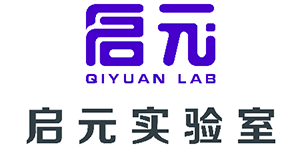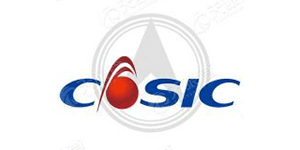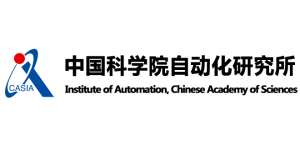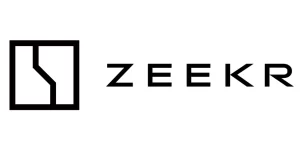


I. About the product:
(1) Name of equipment: Multifunctional neuropsychological and behavioral function testing and training instrument (psychophysical ability testing and rehabilitation training instrument)
(2) Equipment Model: DDX-200
(3) Instrument Description: This instrument is a single chip microcomputer and its supporting micro-printer and the operation of the part of the composition of the intelligent integrated scientific instruments. It contains more than thirty tests, each test item can be selected by keyboard, and when a test is completed, the data can be automatically processed and printed out. At the same time, it is also designed with the function of rehabilitation training, any one of which can be selected according to the clinical needs of the training of the specified time or number of times.
(4) Function Introduction: This product is the earliest multi-functional psychology experimental instrument developed in China, initially by the Beijing University of Aeronautics and Astronautics research and development and through the transformation of scientific and technological achievements of Beijing Jinfa Science and Technology Company Limited, the latest upgrades to improve the newest generation of products, the instrument is equipped with more than 30 tests, the test items can be selected arbitrarily through the keyboard, and when a test is completed, it can be automatically processed statistics and printout of the data. When a test is completed, the data can be automatically processed and printed out. At the same time, it is also designed with the function of rehabilitation training, any item can be selected according to the clinical needs of the training time or number of times specified.
Tests focus on audio-visual simple response tests, audio-visual selective response tests, audio-visual attention allocation tests, frequency of movement tests, memory tests and training, numerical symbols tests or decoding tests, connectivity tests, which can also be called visual quality attention allocation, stability tests and training, and discriminative reflection experiments.
II. Test items:
1. Audio-visual simple reaction time test.
Tests of eye, ear, hand, and brain reactions and reaction speeds to understand the actual and potential abilities of the subject and to assist in the diagnosis of dysfunctional decline or retardation.
There are two types of tests: a visual simple reaction time test and an auditory simple reaction time test.
2. Tests on audio-visual selective response.
The test of a subject's ability to differentiate and select the speed of response can be used to understand the subject's lateral dominance, i.e., to examine the dominant hemisphere of the brain.
Includes a visual 覚choice response time test and an auditory choice response time test.
3. A test of visual and auditory attention distribution.
It is a test and training program that examines human visual, auditory, and attentional distribution, and is used to understand and change the coordination of movement, learning process, and fatigue.
This is an attention allocation test that requires the participant to use both the left and right hand simultaneously with sound and light stimuli, with three types of sounds and adjustments to increase the level of difficulty. The Q-value (attention allocation value) is calculated by the computer and printed out directly.
4. Frequency of movement test.
This test, also known as the Finger Tapping Test, is one of the essential neuropsychological tests and is a sensory-motor test that examines the fine motor skills of the hands of the participant in order to provide an indication of the pathology of a brain injury, as well as an effective method of training for rehabilitation.
The test is designed to be hand-friendly, foot-friendly, hand-crossing, foot-crossing, and hand-foot-crossing, so that you can choose the test items according to your needs.
5. Memory testing and training.
In clinical practice, memory impairment is an obvious symptom of many neuropsychiatric disorders, which needs to be identified by objective methods. In education, talent selection and many industries, objective methods are also needed to identify memory ability, and in rehabilitation medicine, memory test is indispensable for the diagnosis and treatment of patients as well as for the assessment of the effect of rehabilitation, and it is also a test of attention, observation ability, and instantaneous memory, which can be used to judge and study the degree of brain damage, dementia, mental retardation and other problems. It is also a test of attention, observation and instantaneous memory, and is used to determine the extent of brain damage, dementia, mental retardation and other problems.
Tests include: "Tests of Deficit Memory," "Tests of Short-Term Memory," "Backwards Counting," "Counting by 3′s," as well as Numerical Breadth Tests, Visual Memorization Test". The test items can be selected at any time on the keyboard, and the time and level of difficulty can be adjusted for testing or rehabilitation training.
6. Tests on digital symbols or decoding tests.
This test is designed to measure general learning and associative abilities, visual and motor fine motor skills, perceptual discrimination and dexterity, as well as persistence and speed. It is a sensitive test for measuring the impact of brain damage in adults and children.
7. The link test can also be called the visual quality attention allocation.
This is a test that examines vision, concepts and visual-motor tracking. There are two types of tests: Type A and Type B, with Type B being more difficult than Type A. The Type A test is generally considered to show the functioning of the right hemisphere. Style A is generally considered to be a test of the right hemisphere, reflecting more primitive perceptual-motor rates. Type A is generally considered to reflect the right hemisphere's functioning, i.e., the more primitive perceptual-motor rate, whereas Type B is considered to reflect the left hemisphere's functioning, and includes conceptual and attentional shifts in addition to perceptual-motor rate. This test is simple to administer, sensitive to diffuse and lateralized brain damage, and useful in screening for frontal lobe dysfunction.
We have designed a variety of permutations and combinations so that it is not easy for subjects to plan in advance, and the results are scientific and reliable.
8. Stability tests and training (or arm stability tests).
It is an important parameter closely related to physiology, psychology and pathology of the human body, and is extremely relevant to attention, emotion, fatigue, and higher and lower nervous activity. Therefore, it is often required in the treatment, research, and rehabilitation of neurological disorders, psychiatric disorders, geriatric disorders, pediatrics, and traumatic hand injuries and other disorders resulting in a decrease in the function of the hand. Therefore, it is often required in the treatment, research, and rehabilitation of various diseases that cause hand function decline.
9. Identification reaction experiments.
This test is often used in experiments in motor psychology, but in recent years it has also been used in neuropsychological tests, as well as in rehabilitative psychological training, where it examines the discriminative reactions and motor coordination of the brain, eyes, hands, and feet by means of prescribed colors, lights, and keys.
III. Technical parameters and annexes:
1. Working conditions
1.1. Power supply voltage: AC220V±10%;
1.2 Rated power: 35VA
1.3, power frequency: 50HZ ± 1HZ
2. Technical requirements
2.1 Time resolution: 1ms
2.2 Scanning period: 20 ms
2.3. Accuracy: ≤1%
2.4 Type of sound stimulation: 3 types (high, medium and low)
2.5、Integrated nine holes instrument, can do movement stability test
2.6, General keys: 17 (with background lighting - single color)
2.7. Numeric buttons: 10
2.8. Symbol buttons: 9
2.9. Function buttons: 4
2.10. Light stimulus response buttons: 12 (response time, attention allocation, etc.)
2.11. Color buttons: 3 (red, yellow, green)
2.12, square keys: 2 (hand coordination experiments)
2.13, foot reaction switch: 2-way foot pedal
2.14. Headphone output connector: 1 pc.
2.15, power supply interface: 1
2.16, spare interface: 1
2.17. Power protection: support
2.18, working temperature: 0 degrees - 40 degrees
2.19, Storage temperature: stored in relative humidity 10%-100%, including condensation, ambient temperature (-40 ° C to +70 ° C), atmospheric pressure range of 500-1060hpa, no corrosive gases, well-ventilated room.
2.20、Mainframe external dimensions:430mm×305mm×120mm
IV. Applicable groups
It can be widely used in clinical psychological tests, neuropsychological tests, rehabilitation psychological tests and rehabilitation training, as well as in experimental psychology research.
(1) It applies to practitioners and audiences in such industries as education, justice, the army, medical care, the armed police, firefighting, government, business, consulting organizations, scientific research institutes, and special fields (aviation, navigation, etc.).
(2) It is applicable to units or individuals who have the need for clinical psychological tests, neuropsychological tests, rehabilitation psychological tests and rehabilitation training, as well as to experimental psychology research organizations.
(3) This equipment is intended for use by counselors, therapists, and physicians who understand the aspects of psychological testing, or by users with appropriate training.
V. Reasons for recommendation
In the clinic, the subject's eye, hand, ear and brain reaction ability and reaction speed can often cooperate with the counselor or physician to find out the potential dysfunction with the diagnosis of functional deterioration or retardation, through the test and training of human visual, auditory and attention allocation to change the coordination of recognized movements to alleviate fatigue phenomenon in the learning process, and through the sharp hand, sharp foot and other tests for the cases with brain damage to provide effective rehabilitation training. It also provides effective rehabilitation training for cases of brain damage through tests such as the sharp hand and sharp foot, and tests on attention, observation, and instantaneous memory to help determine the degree of brain damage, Alzheimer's disease, mental retardation, and neurological disorders. It is a very practical psychological experiment and rehabilitation equipment.



Attention allocation is the ability of a person to direct attention to two or more activities or objects at the same time. It is a kind of ability of people to adjust their attention according to the needs of the current activity, which is fundamentally different from attentional distraction. Its realization depends mainly on whether it has the skillful ability, that is, at the same time in two or more than two kinds of activities, there can only be a kind of rusty, need to focus attention, while the rest of the action must be quite skillful in the edge of the attention can be accomplished. In addition, the simultaneous activities must be performed in different organs of the human being, otherwise it is impossible to realize the dual or multiple use of the mind.
The level of attention allocation depends on the complexity of the nature of the simultaneous activities and the level of individual proficiency. Usually, several simultaneous activities are intrinsically related to each other, are in a neighboring space, have a low level of complexity, and have a level of individual proficiency that facilitates the allocation of attention; otherwise, attention is difficult to allocate.
This instrument measures the magnitude of the attention distribution of the subject, i.e., it examines the subject's ability to perform two tasks at the same time. This instrument can also be used to study the movement, learning process and fatigue phenomenon. It can be widely used in the fields of learning, sports and transportation, etc. It is suitable for psychological teaching experiments in all kinds of colleges and universities.
Primary Operative Markers:
1. The main test panel of the instrument is equipped with a selector switch, digital display, volume adjustment knob, etc.; the test panel is equipped with a bass, midrange, tone three reaction keys, eight light-emitting tubes and their corresponding eight light reaction keys.
2. The sound stimuli were divided into three types: tone, alto and bass, and the subjects were asked to judge and respond to different audio stimuli by pressing the corresponding buttons with their left hands, and recording the number of correct and incorrect responses within a set period of time.
3. The light stimulus is distributed in a ring by eight light-emitting tubes, and the subjects are required to make judgment and response to the light stimulus at different positions, press the buttons corresponding to the light-emitting tubes with their right hands, and record the number of correct and incorrect responses within the set period of time.
4. The above two stimuli may be presented separately or simultaneously.
5. Time setting: 1--9 minutes in nine steps.
6. Record the number of correct and incorrect responses to light or sound, respectively, for a set period of time, up to a maximum of 999 times.
7. Automatic calculation of the Q-value of the NAMA.
8. test results data output interface: serial port, baud rate 1200. optional micro-printer or data acquisition software or special USB flash disk data collector.
9. Instrument dimensions: 330 x 250 x 100 mm.
10.
Instructions for use () Experimental principle
1. The subject judges and responds to continuous, random, acoustic stimuli of different pitches emitted by the instrument. Presses the appropriate button with the left hand as quickly as possible within the time limit. The instrument records the number of correct responses S1.
2. The subject judges and responds to continuous, random, differently positioned light stimuli emitted by the apparatus. Presses the appropriate button with the right index and operates it as quickly as possible within the allotted time. The instrument records the number of correct responses F1.
3. The apparatus randomly, automatically, and continuously presents sound and light stimuli at the same time for a specified time, and asks the subject to press the sound and light buttons on the left and right hand, respectively, and to operate them as quickly as possible within the specified time, and the apparatus records the number of correct responses: S2 and F2, respectively. The formula for calculating the attention allocation Q is as follows:
________
Q = √ S2/S1 × F2/F1
Where: S1 is the number of times the subject responded to a single acoustic stimulus;
S2 is the number of times the subject responded to the acoustic stimulus when both acoustic and light stimuli were present simultaneously;
F1 is the number of times the subject responded to a single light stimulus;
F2 is the number of times a subject responds to a light stimulus when both sound and light stimuli are presented simultaneously;
Determination of Q: When Q < 0.5, no attention is paid to the assigned value.
0.5 ≤ Q < 1.0 Attention to assigned values
Q = 1.0 Note that the assigned value is large
Q > 1.0 Note that the assigned value is invalid.
(1) "for" light; (2) start key - the main test to start the test key; (3) reset key - the middle of the forced interruptions or every group of experiments restart; (4) digital display; (5) volume control knob - the main test before adjusting the appropriate volume (5) Volume control knob - before the experiment by the master test to adjust the appropriate volume; (6) "Timing" key: the master test press this key to set the time for each group of experiments, 1-9 minutes, nine files, the digital display on the top of this key; (7) "mode" key: select the mode of operation, the digital display on the top of this key; (8) "mode" key: select the mode of operation, the digital display on the top of this key; (9) "reset" key - intermediate forced interruption or restart after each group of experiments; (10) digital display (7) "mode" key: select the mode of operation, digital display on the top of this key;
(8) "Number of times" key: After the experiment, select the number of times displayed as the correct number of times or the wrong number of times, and the corresponding lamp above its key will light up;
2. Description of the panel to be operated by the subject:
(1) 3 acoustic signal operation keys: press the "bass" key when you hear bass; press the "alto" key when you hear alto; press the "tone" key when you hear tone; (2) 8 light signal operation keys: press the corresponding operation key according to the position where the red light is on; (3) Light signal lamp: red light is light stimulation; (4) Signal lamp: the light indicates that the operation is performed; the flashing light indicates that the operation is completed within the specified time. (2) 8 light signal operation keys: according to the red light position press the corresponding operation key; (3) light signal lamp: red light is light for light stimulation; (4) light: light indicates that the state of action; light flashing indicates that the specified time into the operation of the item, the intermediate rest; light off indicates that the group experiment into; (5) start key: with the main test panel, for the start test key;
(iii) Operational steps
1. Turn on the power and turn on the "Power" switch.
2. Press the "TIMING" button to set the operating time.
3. Press the "Mode" key to set the mode of operation.
4. Self-test (test sound, test light): the main test set mode "0", press the "start" button, start the "self-test", the subjects were pressed three sound buttons, carefully identify three different tones; were pressed eight light buttons, the corresponding light-emitting diode light. The subject presses the three sound buttons to carefully recognize three different tones; presses the eight light buttons, and the corresponding light-emitting diode lights up. Every time the key is pressed, the digital tube will display a group value accordingly. Test whether the instrument is normal.
5. Note the allocation of experiments: the master test is set in the mode "1 - 7".
(1) The test begins when the subject presses the start button and the indicator light comes on;
(2) Diatonic Response (Mode 1): After the sound is uttered, the subject responds correctly as soon as possible with his/her left hand to the two tones in the center and the center of his/her hand according to the tone of the sound;
(3) Three-tone response (Mode 2): After the sound is uttered, the subject responds correctly as soon as possible with the left hand to the middle, middle, and low tones, according to the tone of the sound;
(4) Light Response (Mode 3): After the light is emitted, the subject presses the button corresponding to the illuminated tube as quickly as possible with the index finger of the right hand;
(5) Two/three simultaneous responses of sound and light (Mode 4/5): The right and left hands respond simultaneously as described above;
(6) Measurement of Q value (mode 6/7): two/three sound reaction, light reaction, two/three sound and light reaction at the same time three experiments in a row, after the automatic calculation of the amount of attention to the distribution of the Q value; each experiment into the middle of a break, the start lamp blinking, press the "start" button, the experiment continues;
(7) When the indicator light goes out, it indicates that the specified test time has expired;
(8) the test process, will be displayed in real time correct or incorrect number of times, display the correct number of times, the corresponding "correct" lamp is lit; display the number of errors, the corresponding "error" lamp is lit. "mode 4 or 5" sound and light combination experiment, display the correct or incorrect number of times, the sound for the display mode "4 or 5", the light for the display mode "4.5.", that is, the light has a decimal point to show the difference;
6. Viewing test scores of subjects
After each group test is completed, press the "Times" and "Mode" buttons to view the subject's test results.
(1) sound or light single experiment (mode 1, 2, 3): press "times" key, check the correct or incorrect number of times; (2) sound or light combination experiments (mode 4, 5): press the "mode" key, check the data of the sound or light, the sound mode displays "4 or 5", the light mode displays "4. or 5.". (2) sound or light combination experiment (mode 4, 5): press the "mode" key, check the data of sound or light, the sound mode shows "4 or 5", the light mode shows "4. or 5.". Press the "Times" key to check the corresponding correct or incorrect times;
(3) Determination of Q value experiment (mode 6, 7): Press the "mode" key, you can view the experimental data of each item, the corresponding mode is displayed as 1/2 (sound) -→ 3. (light) -→ 4/5 (sound and light combination of sound) -→ 4./5. (sound and light combination of light) -→ 6/7 (Q value), and so on. →4./5. (light in sound-optical combination) -→6/7 (Q value), and so on. Press the "Times" key to check the corresponding correct or incorrect times. When Q value is displayed, pressing "times" key is invalid, and the corresponding lamp goes out; when Q value > 1.0, note that the assigned value is invalid, and "-. - When the Q value > 1.0, note that the assigned value is invalid, and the display will show "-.
7. Printout: After the test, if you connect the micro printer or data acquisition software or special USB flash disk data collector, press the "Print" button, you can output the test results.
8. After each group of experiments has been completed and restarted, the "reset" button must be pressed.






































